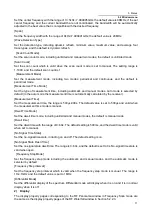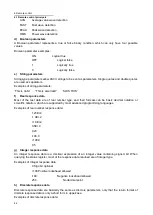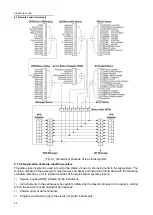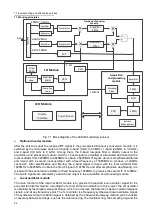
6 Remote control
6.1 Remote control principals
84
the beginning of the command. It can be abbreviated to the following command line:
HCOP:ITEM ALL;IMM
6.1.4 Command Sequence and Synchronization
IEEE 488.2 defines the difference between an interleaved command and a sequential command:
Sequential commands are sequences of commands that are executed continuously. Each
command is usually executed faster.
An overlapping command is one that is not executed automatically before the next command is
executed. It usually takes longer to process overlapping commands, and programs are allowed to
process other events synchronously during the period.
Even if there are multiple setting commands on a command line, they may not be executed in the order
they were received. To ensure that commands are executed in a certain order, each command must be
sent on a separate command line.
Example: the command line contains setting and query commands
If multiple commands on a command line contain query commands, the query results are unpredictable.
A fixed value is returned for the following command:
:FREQ:STAR 1GHZ;SPAN 100;:FREQ:STAR?
Return value: 1000000000 (1GHz)
The following command returns an unfixed value:
:FREQ:STAR 1GHz;STAR?;SPAN 1000000
The returned result can be current initial frequency value of the instrument before such command is sent,
since the host program will not execute the commands one by one until all command messages are
received. If the host program receives the command and executes it, the return result may also be
1GHz.
The setting command and query command are sent separately.
General rules: The setting command and query command shall be sent in different program control
messages, so as to ensure the returned result of the query command is correct.
6.1.5 Status reporting system
The status report system stores all operation status information and error information of current
instrument. They are stored in the status register and the error queue, respectively, and can be queried
via the remote control interface.
6.1.5.1 Structure of status register
The register classification is described below:
1) STB, SRE
The status byte (STB) register and its related mask register - service request enable register (SRE),
comprise the top register of the status reporting system. STB saves the general working state of the
instrument by collecting the information of lower registers.
2) ESR, SCPI Status Register
STB receives information from the following registers:
The value of the event status register (ESR) and the event status enable (ESE) mask register.
Tip
Содержание 3943B
Страница 2: ...3943B Monitoring Receiver User s Manual Ceyear Technologies Co Ltd...
Страница 4: ......
















































